According to HubSpot’s inbound marketing stats, almost 75% of internet users never scroll past the first page of search results. It means having a high website ranking on Google's search engine results page (SERP) is crucial for your online presence. To achieve this, it's essential to have a strategic marketing plan that includes analyzing the content gap. You can identify necessary changes by performing a content audit, such as conducting SEO keyword research, optimizing your website structure, etc., to achieve the desired marketing goals. This will increase the likelihood that your website appears on top for relevant user searches. By properly implementing content marketing strategies, you can increase website traffic and work on SEO plans & strategies to ensure that the visitors convert into customers. This blog will delve into content gap analysis, explaining what it is, how it works, and why it's an essential SEO step.
With traditional marketing being different from online marketing, multiple search engine optimization (SEO) trends keep evolving. It's important to keep up with the latest SEO trends to stay ahead of the competition and create plans and strategies that align with digital marketing practices. Content marketing plays a critical role in this, and one popular technique is content gap analysis. This method allows SEO experts and content specialists to identify opportunities to improve website visibility and increase organic traffic.
What is content gap analysis?
A crucial SEO strategy known as “Content Gap Analysis” includes methodically detecting content gaps between your website and those of competitors or leaders in the field. You may learn more about the content environment in your niche by closely examining keywords, themes, and search engine rankings. This method empowers you to create purposeful content, addressing information gaps and fulfilling your audience’s needs better than competitors. It’s essential for boosting your online presence, increasing organic traffic, and ranking better in search results. You may use content gap analysis as a strategic technique to assist you in managing a vast sea of online content. Creating content with a purpose rather than merely writing blogs and articles is vital. You need to ensure that you have unique content and avoid duplicate content so that Google's search engine algorithm ranks your website higher for the keywords or search terms entered.
The objective is based on filling in the information gaps that your existing content collection has compared to your competitors. Finding keywords and topics that can draw in your target audience is essentially like going on a treasure hunt. Finding these gaps enables you to create content that not only performs well in search results but also with your audience. It’s about meeting the demands of your audience more effectively than anybody else in your area by offering remedies, responding to queries, and addressing concerns. Content gap analysis is your hidden weapon in the cut-throat world of online advertising. It gives you the power to decide with knowledge what content to create while ensuring that your efforts align with the needs and expectations of the target audience. In the end, it’s the link that ties the information on your website to the demands of your audience, generating organic traffic and building brand awareness.
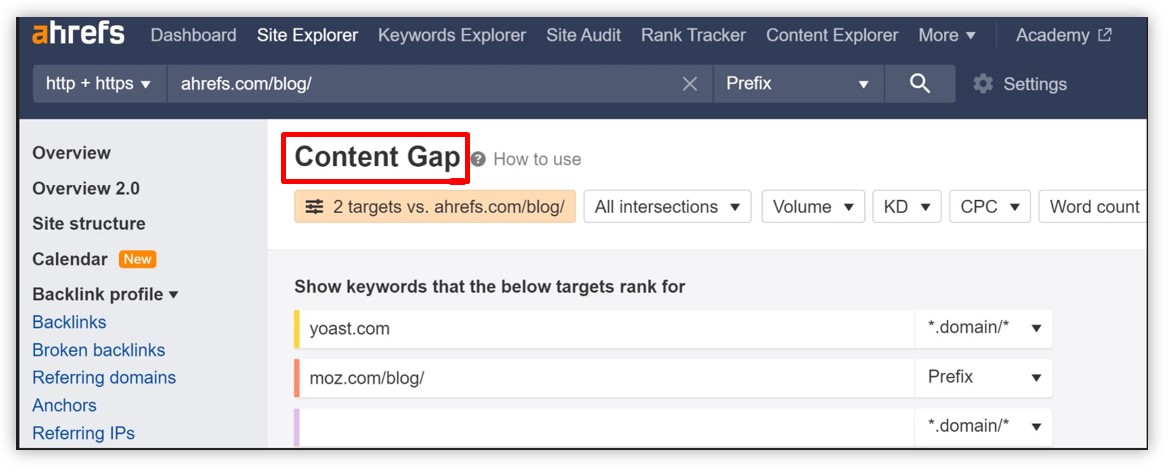
How does content gap analysis work?
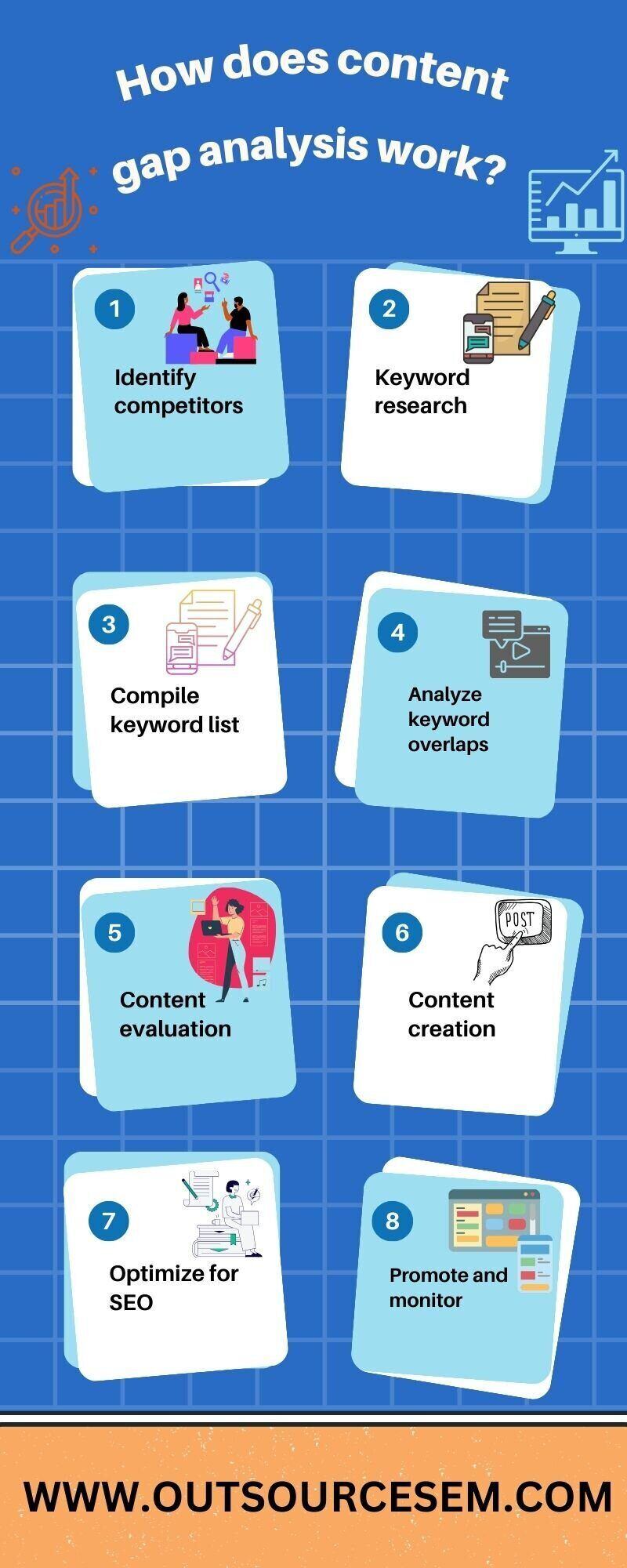
1. Identify competitors - The first step in the content gap analysis process is to identify the main competitors in the online market. These competitors frequently score highly for keywords that are relevant to your niche on search engines. By identifying these competitors, you can clearly concentrate your investigation and direct your efforts towards those that are most directly competing for the attention of your target audience.
2. Keyword research - Conducting in-depth keyword research is the foundation of content gap analysis. Finding relevant core and secondary keywords for your business or speciality is part of this process. Use effective tools like Google Keyword Planner, SEMrush tool, Ahrefs tool, or Moz tool to collect this essential data. These tools provide information on keyword difficulty, search volume, and similar terms. This framework investigation ensures that your plan depends on reliable facts and establishes the strategies for your content gap analysis.
3. Compile keyword list - It’s important to compile comprehensive keyword lists for both your website and the competitors you’ve found using the results of your keyword research. These lists should include crucial metrics like search volume and each website’s current placements in search engine results, as well as the keywords that each website presently ranks for. These lists serve as your compass throughout the analysis, pointing you in the direction of the possibilities and the gaps that need to be addressed.
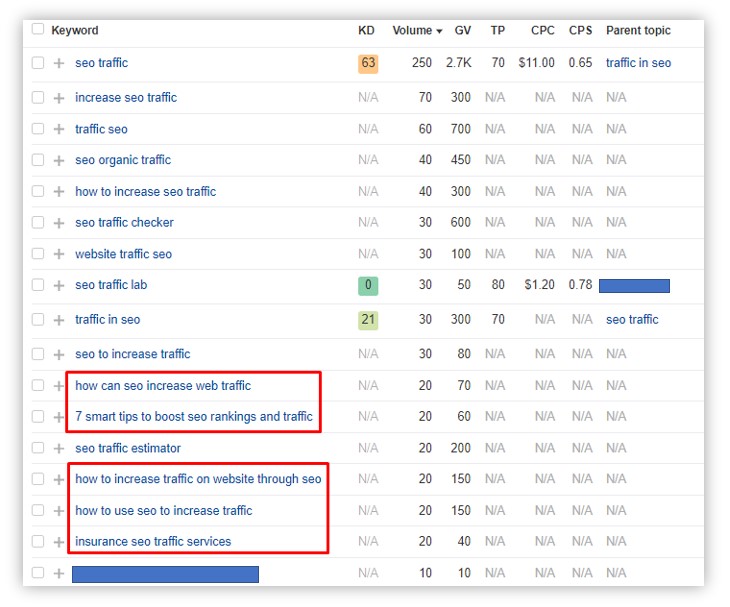
4. Analyze keyword overlaps - It’s time to look deeper into your analysis now that you have your keyword lists. Compare your keyword list to those of competitors using spreadsheets or other SEO tools. In this case, you’re searching for keywords that your competitors are effectively ranking for but that are noticeably missing from your content strategy. These gaps represent unrealized potential and invaluable possibilities to improve your exposure in search engine results, raising your likelihood of drawing in a larger audience.
5. Content evaluation - The next critical phase in the content gap analysis procedure requires a thorough analysis of the websites of competitors that are ranked for the keywords you’ve chosen. Examine the content carefully, paying attention to its quality, layout, and user engagement, as well as its relevance. What important details are they giving out, and how are they giving them to their audience? This phase is essential to ensure that your content strategy outperforms the competition rather than merely keeping up with it. It’s about learning from the best and then aiming to be even better.
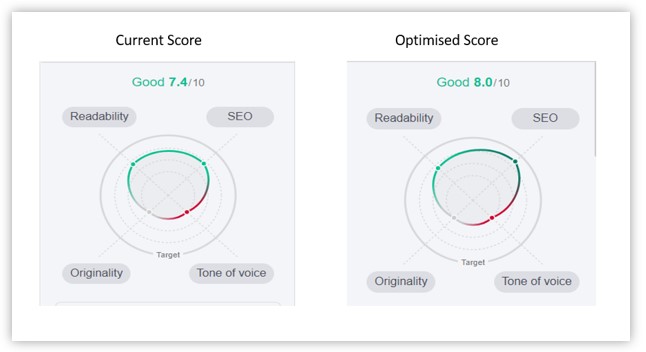
6. Content creation - You are now prepared to start the creative phase, which is creating content equipped with the invaluable insights gained from your analysis. You are responsible for providing thorough, high-quality content that specifically addresses the gaps in your competitors’ offerings. However, just copying won’t cut it; to stand out from the crowd, your content must provide a unique point of view or additional benefit. This is your moment to demonstrate your expertise and enthral your audience with content that ranks highly and has a lasting impact. To have the best results with content marketing, you can avail of outsource SEO services, offshore SEO services and white label SEO services.
7. Optimize for SEO - Don’t undervalue the technical aspects of SEO; they play a crucial role in content gap filling. Make sure the on-page SEO of your most recent content is optimized. This entails thoughtfully adding target keywords into your meta tags, content titles, headers and body. By doing this, you can improve your content’s visibility in search results, increasing its accessibility for both search engine algorithms and your target audience. A proper SEO audit and plan & strategy can help optimize SEO.
8. Promote and monitor - Once your new content has been published, you still need to promote it and keep an eye on it. It’s time to market it through a variety of methods actively. This involves using email marketing campaigns, social media, and outreach to business leaders who might help spread the word about your message and in lead generation. The constant evaluation of the effectiveness of your content is equally important. Track SEO metrics like organic traffic, user engagements, and keyword rankings using Google Analytics tools. This information gives you vital information about the effectiveness of your content gap-filling efforts and enables you to make the appropriate modifications.

Why is content gap analysis crucial in SEO?
1. Improved ranking - It is impossible to underline the importance of content gap analysis in improving your website’s rankings. It’s like finding undiscovered gold in the enormous sea of search engine results. You’re essentially establishing your claim in the online world, where you may compete successfully by finding keywords and topics that your competitors are already doing highly for. You may strengthen your chances of obtaining not just higher but outstanding places on search engine results pages (SERPs) by filling these gaps with high-quality, relevant content. Your visibility to potential visitors and customers grows considerably as you move up the rankings, creating the groundwork for long-term success and development.
2. Enhanced user experience - Delivering an outstanding user experience is just as important to SEO as the technical components of optimizing for search engines. By applying the technique of content gap analysis, you may more deeply engage your audience. By filling in any information gaps in your content offerings, make sure that your website offers useful information that perfectly satisfies the expectations of your audience. Visitors are more likely to remain on your site longer, explore more pages, and interact with it more fully when they discover all they are searching for and more. As a result of the enhanced user experience, bounce rate is decreased, visitors stay on the website longer, and eventually, the conversion rate increases.
3. Content strategy refinement - Imagine having an outline to help you navigate the complex pathways of the digital world. Exactly that is provided by content gap analysis. It gives you invaluable insights into the precise terms and subjects that intensely connect with your audience. You may precisely optimize your content strategy using this information as a guide. You’ll create great content that smoothly satisfies user wants for information and answers their concerns. This strategic alignment does more than simply increase organic traffic to your website; it also establishes your brand as an authority in your field, enhancing long-term trust with customers.
4. Competitive advantage - Gaining and keeping a competitive advantage in the ongoing battle of the digital sphere is a never-ending task. Content gap analysis gives you the strategic edge that you need to not only keep up but also advance. You gain a stable position at the front by routinely spotting and correcting content gaps that your competitors may have ignored. By doing competitor analysis, your website develops to become the go-to source for information in your sector, bringing in more organic traffic as well as new clients who are aware of your value and area of expertise. With this edge, you build your brand and establish yourself as the authority in your field which also helps in creating brand awareness. It is what sets you apart from the competition and drives you towards long-term success in the digital age.
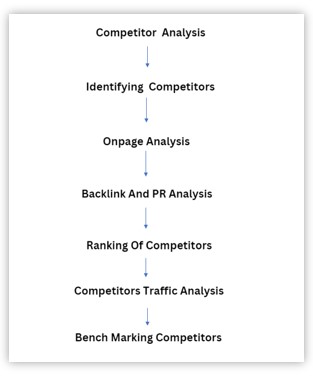
5. Data-driven decision making - The content gap analysis is the compass that directs your SEO strategy and offers the data-driven insights necessary to make wise decisions. It provides a transparent, fact-based picture of what terms and subjects are popular with your target audience and where you have space to shine. By using a data-driven strategy, you can make sure that your content efforts are grounded on a thorough understanding of your audience, competitors, and speciality. With this information at hand, you can quickly change your content strategy to keep it in line with changing user behaviour and trends, thereby maintaining an advantage in the fiercely competitive digital environment.
Additionally, data-driven decision making goes beyond just creating content. It encompasses all elements of your digital marketing plan, from user experience improvement to keyword targeting. You may use the knowledge you obtain from content gap analysis to make smart decisions that will boost your entire online presence as well as your SEO. Every choice becomes more accurate, efficient, and productive, whether it’s customizing your advertising campaigns, improving the design of your website, or improving your email marketing efforts.
Conclusion
- In today’s digital environment, content gap analysis is the cornerstone of a successful SEO strategy. It offers a clear path to better user experiences, enhanced search engine rankings, and content strategies that perfectly match user intent. In addition to improving your website’s visibility, you can also create an environment where visitors are more likely to interact and convert by finding and filling up content gaps compared to your rivals. Meeting your audience’s requirements and expectations is more important than merely satisfying search engines. By using a data-driven strategy like content gap analysis, you can be sure that every choice you make is supported by facts.
This information affects all aspects of your digital marketing strategy, from keyword targeting to user experience optimization, going beyond just content generation. Additionally, content gap analysis provides a strategic benefit. By regularly identifying and filling in content gaps, you can make your website the first choice for information in your field and draw in organic traffic and clients that value your expertise. As for PPC ads, you outsource PPC services to a white label PPC company and hire PPC experts to optimize the performance of the PPC campaign. Similarly, you can outsource content marketing services to a digital marketing company and hire offshore digital marketing experts to optimize website content. By hiring our digital marketing experts you can also avail various services for your other businesses like electrician SEO, flooring SEO, construction SEO, plumbing SEO, painting SEO and much more for increasing online growth of your business.
References:
. Guide to content gap analysis: steal competitor traffic
. How to do a content gap analysis for SEO
